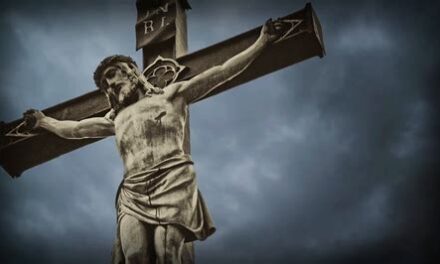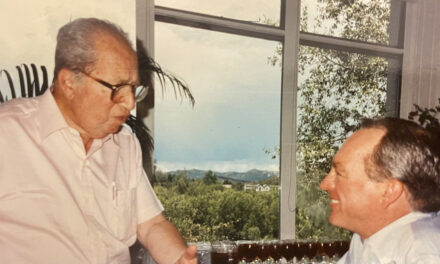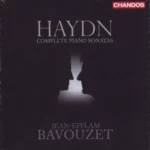- Richard Strauss, ‘Im Abendrot,’ Last Four Songs (1948). This the first recording I heard of the Last Fours Songs, and after hearing many others, it’s the only one I keep returning to. Strauss died the year this was composed at age eighty-five. The premiere had to wait until May 1950 at Royal Albert Halls sung by soprano Kirsten Flagstad and the Philharmonia Orchestra and conducted by Wilhelm Furtwängler. All four songs exist on the same wondrous level — I have sometimes console myself by recalling this was a work first played the year after I was born, in other words, it was born in my lifetime. David Bowie has described this performance as as “aching with love for a life that is quietly fading.” About The Last Fours Songs, Bowie remarked in a 2002 interview: “There’s a certain sense of universality in those songs that Strauss wrote at the end of his life when he was 84…they’re the most terribly romantic, sad, poignant pieces that I think have ever been written . . . . “I kind of used them as a template.” This song, “Beim Schlafengehen” (When Falling Asleep), is a setting of a poem by Herman Hesse.
Now that I am wearied of the day, / my ardent desire shall happily receive
the starry night / like a sleepy child.
Hands, stop all your work. / Brow, forget all your thinking.
All my senses now / yearn to sink into slumber.
And my unfettered soul / wishes to soar up freely
into night’s magic sphere / to live there deeply and thousandfold.
2. Leonard Bernstein, Simple Song, MASS: A Theatre Piece for Singers, Players, and Dancers (1971). I attended one of the first performances of Mass at the Kennedy Center. I was bit late getting my seat, but as I stood in the aisle I saw Alan Titus walk on stage with a guitar and sing this stunning song, one that has remained with me ever since. After many subsequent recordings, no one has sung it with great ease and beauty than Alan Titus. I’m always particularly touched by Bernstein’s setting of ‘the Lord is my shade, he’s the shade upon my right hand’ and the words that follow (Ps 121.5).
Allan Titus sings and Leonard Bernstein conducts the NYPO. Be sure to click through to hear it on YouTube.
Alan Titus, baritone
3. Franz Lehar,’ Von Apfelblüten einen Kranz,’ Das Land des Lächelns/The Land of Smiles (1929). Fritz Wunderlich left us a recording of this aria (actually two) that is quite possibly the most beautiful vocal track ever recorded. You are probably smiling in dismissal as you read this. Well, just listen is all I can say. He is a tenor who sings with absolutely security throughout his range. Nothing is taken for granted. The vocalizations on ‘ah’ are carefully and tenderly modulated until Wunderlich’s voice blooms to a level only granted to a few blessed singers. His accidental death in 1966 at age thirty-five left a whole in twentieth-century vocal performance that no one was capable of filling.
A wreath of apple blossoms, ah, / I put the lovely woman in front of the window
On a moonlit night in April … Ah! / I will sing a song of ardent longing
And my lute should sound like silver / On a moonlit night in April … Ah!
You are the dreamy sweet life / You alone shall be my goddess.
May I raise my eyes to you / Confess to you that I look after you?
I am completely filled with your magic picture. / If you were mine, no happiness in the world could be greater.
I desire you very much, you my world! / I humbly bow wherever your shadow falls.
Your mouth shines like apple blossoms / And your golden hair shine
Like a moonlit night in April … Ah! / The touch of your rose-colored cheeks
Has caught me full of longing like an intoxication. / On a moonlit night you give me
On this moonlit night you give me/ your heart!
Fritz Wunderlich sings Marszalek conduct the West German Radio Orchestra.
4. Samuel Jones, Elegy for String Orchestra (1963). Born in 1935, Samuel Jones is one of a handful of great American composers who are actively composing. Jones has written music in all genres, but he is especially well known for his three symphonies, oratorios, and solo concerti for violin, cello, trumpet, horn, trombone, and flute. About the last piece, premiered by the Philadelphia Orchestra, one reviewer called it a “concerto that expresses what it means to be human,” which could be said about all of Jones work. Jones explains his Elegy “was composed in a short time during the dark days that followed the assassination of President John F. Kennedy, was first performed on December 8, 1963 by the Saginaw Symphony, the composer conducting. Written for string orchestra, the work is a brief musical statement of the feelings of grief and shock which swept the country and, indeed, the world, after the President’s death. During the years since the Kennedy tragedy, the piece has been performed on five continents as conductors have turned to this work on numerous occasions both for concert performances as well as to mark the passing of notables. The music is simply and deeply expressive of the anguish one feels at the loss of a loved one.”
Samuel Jones (b. 1935)
Samuel Jones conducts the Houston Symphony in a session that required only one take.
5. Giovanni de Palestrina, Sicut Cervus (1608). This four-part motet by the Renaissance master Palestrina is one of the many highlights of Renaissance polyphony, meaning many voices. Sacred music until 1300s has been monophonic, one voice or a group of voices singing a single melodic line most often call chant. Just as painting flowered with perspective in the early Renaissance so music gained the perspective or dimensionality created by two, three, four, or more melodic lines being sung simultaneously creating beautiful and often surprising harmonies. Renaissance choral music was one of my great discoveries in my lifelong journey through classical music. I didn’t settle for a ‘greatest hits’ collection but ventured past composers like Palestrina, Victoria, Byrd, Machaut, and Tallis to find equally brilliant pieces by Robert Parsons, Christopher Tye, Cristobal Morales, and Pierre de la Rue among others. This period is a world of music unto itself, vast, deep, and always rewarding. Sicut cervus desiderat ad fontes” (As the deer desires the fountains) is a setting of Psalm 42.
New York Polyphony sings.
















